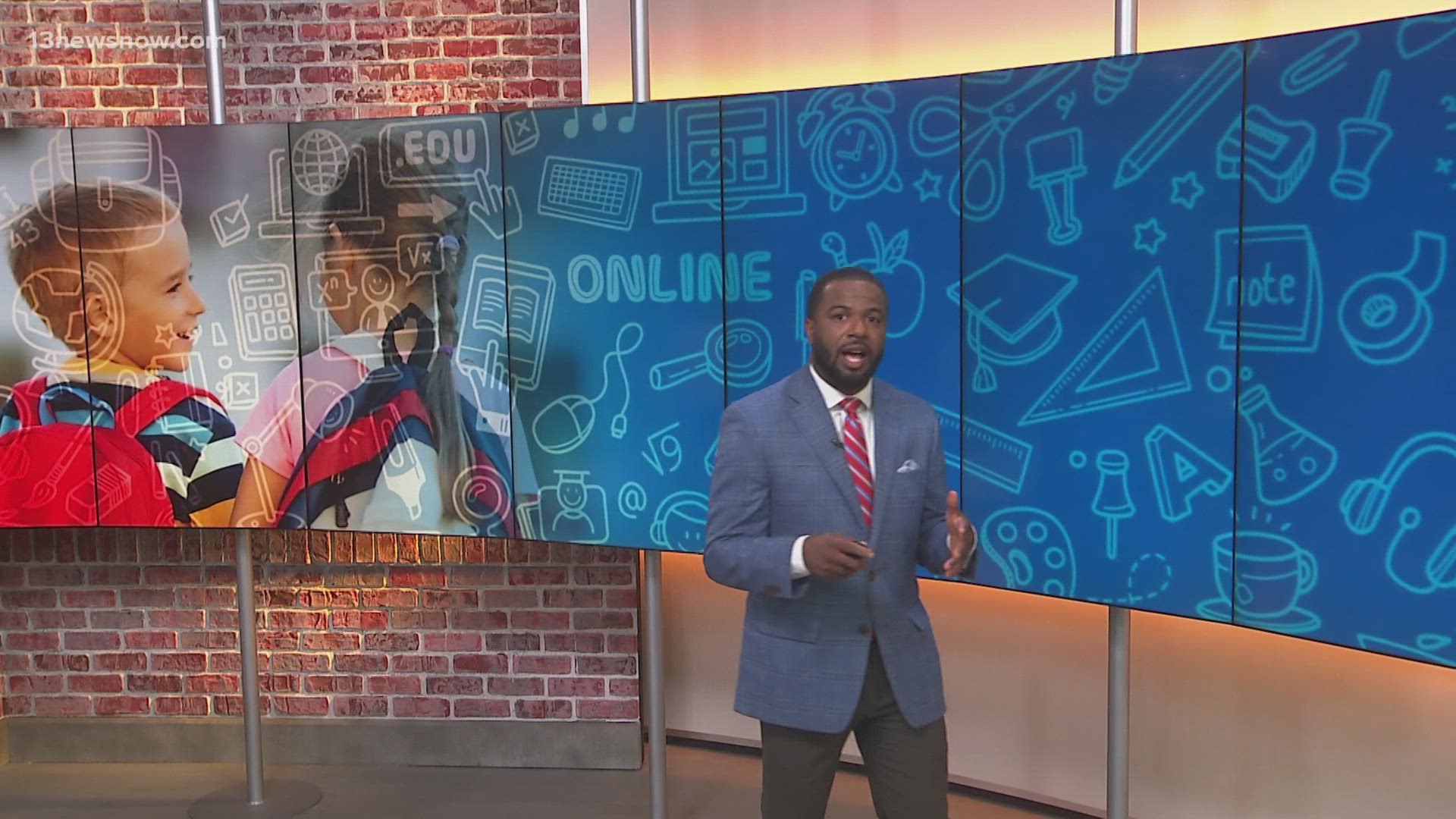VIRGINIA, USA — The Virginia Department of Education (VDOE) shared a draft on Thursday of the state's cell phone-free education guidance ahead of the start of the new school year.
This guidance comes after Governor Glenn Youngkin issued Executive Order 33, which aims to bring cell phone-free education to Virginia's public schools. It directs the VDOE, the Virginia Department of Health and several other Virginia agencies to help parents, teachers and students better understand the harmful effects of cell phones and social media on children, and to establish policies that remove cell phones from Virginia's public-school classrooms.
After listening to feedback from thousands of Virginians, the VDOE developed a draft of guidance for school divisions on cell phone-free policies and procedures.
The draft guidance defines cell phone-free education in Virginia’s schools as “bell-to-bell," meaning phones should be turned off and stored away from the first bell at the start of the school day until the dismissal bell rings at the end of the school day. “Bell-to-bell” includes lunch and time in between class periods.
The draft guidance is divided by age group and outlines cell phone restrictions in Virginia's public schools as such:
Elementary School: If a parent determines their student needs to bring a cell phone to school, it must be stored off and away from the student during the school day. It should not be used in the building or on school grounds before or after school.
Middle School: Students should not have an easily available cell phone during the bell-to-bell school day. School divisions should establish local policies that determine cell phone use within the school building or on school grounds outside of the school day, including before and after school.
High School: Students should not have an easily available cell phone during the bell-to-bell school day. Outside of instructional time, cell phones may be used on a high school campus before or after school.
There are several gray-areas in which parents have raised concern, including students with medical conditions and communication in emergency situations.
The VDOE shares that students with documented medical conditions who need their phones to monitor their medical needs may have a medical exemption to the bell-to-bell policy in their Individualized Education Plan, 504 plan, and/or individualized health care plans.
Parents have also shared that they want to know about their child's wellbeing during an emergency. All school divisions are required to build plans to communicate directly with parents and create reunification plans. These should already be addressed in their crisis and contingency plans. Those plans should also be discussed with parents and students to know how such situations will be handled if they occur.
In the case of a family emergency, many public schools already have procedures in place. The draft guidance requires school divisions to develop and share these with parents and students. These procedures should be posted on school divisions' websites as well.
That draft guidance is on VDOE’s website and is available for review and comment through September 15, 2024.
After considering feedback to the draft guidance, the VDOE will issue final guidance on Sept. 16, 2024.
School divisions will adopt these policies and procedures by Jan. 1, 2025.

